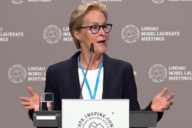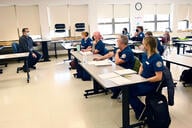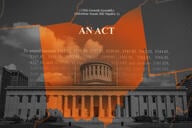You have /5 articles left.
Sign up for a free account or log in.
Trying to reconcile what he sees as an ongoing struggle between institutional access and educational quality, the chancellor of the Nevada System of Higher Education says its Board of Regents should consider the possibility of limiting enrollments at the state's community colleges.
Though Daniel L. Klaich has not developed a formal proposal for such a dramatic change, he said he expects to present "strong ideas" on the subject of educational quality at a meeting of the system's Board of Regents this week. His appeal to the board comes at time when the state system has been asked to serve increasing numbers of students with less funding: its budget was cut by nearly 24 percent, or $314 million, for the 2009-11 biennium even as its overall full-time equivalent enrollment grew by 4.3 percent this fall.

Daniel L. Klaich, chancellor of the Nevada System of Higher Education.
“These kinds of conversations are all brought to the surface in an extraordinary light because of the current budget crisis we’re all in, which is particularly severe here in Nevada,” Klaich explained. “But, when you have the budget of higher education cut and there is an increase in enrollments, especially at the community colleges, you can’t say that we’re doing the same kind of work.”
Educational standards at the state’s community colleges have not fallen, Klaich insisted, but he admitted that they are in danger of dropping if the institutions are forced to further stretch their resources to accommodate increasing numbers of students. Even now, he argued, the system’s community colleges are not doing enough to graduate their students in a timely manner.
“I do run into faculty members who say, ‘I’ve just got to take this one more kid because I don’t want him to lose a semester of progress’ and then ‘I just need to take those five more kids,’ ” recounted Klaich, acknowledging how the state’s budget crisis has created difficulties for instructors and administrators.
“As a system, we have an obligation to be honest that these are the limitations in our ability to produce quality students. You’re doing one of two things: You’re stretching out a student’s time toward graduation and costing everyone more money, or you’re potentially putting a student with a degree or a certificate who is not qualified to do the work needed in his or her work place. We shouldn’t be taking students' money with no clear path to success. I don’t think that’s acceptable.”
Interested in community colleges?
Visit our "In Focus" page, which
features highlights of our coverage.
As there is no concrete proposal to dissect, Klaich views his idea of potentially limiting community college enrollments as a conversation starter among higher education policy makers and officials in the state.
“When you start talking to community college administrations and faculty about limiting access, you’re going right to a part of their DNA,” Klaich noted. “But, the thing we’re not being honest about is, it’s happening anyway. Classes are being closed; students are being turned away; they’re taking longer to graduate. Whether we’re talking about de facto caps or saying, ‘This is all we can do with the money we have,’ we have to serve the state.”
If such limitations were to be imposed, Klaich said he would shy away from academically competitive admissions, such as using prior grades or standardized tests scores. Instead, he noted he would be more open to something akin to the first-come-first-served method of enrollment.
“Imposing higher quality standards at community colleges makes a tough situation harder,” Klaich admitted. “That would really be pushing a heavy rock up the hill. I’m not talking about stripping away access to community college; I’m not sure that’s a good idea. But, you can’t just take finite resources and spread them infinitely. In a way, this is a kind of ‘Sophie’s choice’ conversation we’re having.”
The Community College Response
Though Klaich’s idea of imposing limitations on traditionally open-access institutions is currently just a talking point and not a concrete proposal, community college leaders from around the state are more than eager to speak up to express their concern about the possibility of such a constraint on their admissions.

Carol Lucey, president of Western Nevada College.
“I think it would be disastrous if we started limiting access,” said Carol Lucey, president of Western Nevada College, who noted that Klaich’s idea has received a lot of pushback from her community college colleagues. “I don’t think it would be good for the country, for the state or for my part of the state. This country has always been built by economic opportunity and mobility.… If you shut down community colleges as open-access institutions, then it puts a bar on the easy entry some people count on to better themselves. It flies directly in the face of our mission.”
Options abound to improve success and accommodate more students with limited resources besides restricting access, said Lucey, whose college’s full-time-equivalent enrollment grew by more than 19 percent this fall. For instance, she is advocating for her institution to mandate stricter prerequisites for certain courses, ensuring that students who enter them are more likely to persist. This, she argued, makes more sense than restricting students up front, before they can even enroll at a community college or start a particular disciplinary program.
Mike Richards, president of the College of Southern Nevada, had a similarly framed, but more nuanced, opposition to Klaich’s thoughts of imposing enrollment limitations.
“Of course, it’s an idea that runs counter to the traditional mission of community colleges,” Richards said. “I think access and quality are related, but I don’t necessarily see them at odds. We do try to provide a quality education to our students, and we measure that in multiple ways. For many of us, it’s quality we provide them with even in difficult times.”
Still, Richards admits that his institution -- like many community colleges in nearby California -- does have a de facto enrollment limit because of funding issues. He estimates that about 5,100 students have been turned away from his institution this year because they have been unable to get into the classes they needed.
“I’ve maintained for some time that I have an outstanding budget for 16,500 full-time equivalent students, but I’m having to stretch that to accommodate around 22,000 full-time equivalent students,” Richards said. “The heart of the issue is that we can’t operate like comparable institutions around the country with our budget.”
To accommodate more students -- Southern Nevada’s full-time equivalent enrollment grew by 4 percent this fall -- Richards noted that his college has increased its tuition, added more part-time faculty, experimented with midnight classes and “dramatically” expanded its online instruction. More measures likes these should be taken, he argued, before considering anything like what Klaich is proposing.
“I don’t know where the trigger mechanism would be to say to those five or six thousand students, ‘We can’t accommodate you,’ ” Richards said. “How can you do that unless you’ve tried everything else possible?”
A Broader View of Limiting Access
Outside observers view the access-versus-quality debate in Nevada as a sign of the times in higher education.
“I’m not surprised that we’re beginning to hear about closing [access to] open-door institutions ... in light of the financial crises these states and institutions find themselves in,” said Stephen G. Katsinas, director of the Education Policy Center at the University of Alabama. “Community colleges have not had open-door policies for a number of their prestige programs -- like nursing and allied health -- for a long time. But these financial cracks we’ve been seeing are becoming crevices. This is the kind of rationing argument we’re likely to see in the future, and it’s going to be a world of hurt for some institutions.”
Other scholars like Thomas Bailey, director of the Community College Research Center at Columbia University Teachers College, appreciate the dialogue an idea like Klaich’s can generate.
“It’s always good to ask, ‘Are we doing the best with the resources we’ve got?’ ” Bailey said. “At some point, somebody could say, ‘We don’t have the money and can’t fulfill our role, so let’s do something limited.’ Bringing up these questions is one way of confronting reality. At least it’s leading to open discussion about what it takes to educate somebody. At places where there are de facto enrollment limits, they are kind of avoiding that discussion. To some extent, I appreciate the explicit statement of the financial realities [in Nevada]. Hopefully, that leads to a discussion as to if people would be willing to accept limitations on enrollments.”
Such discussions, he argued, however, are complicated by an institution’s perceived pledge to its student.
“Some would say that when you take a student, you make an explicit commitment to them,” Bailey said. “But if you take more then you have resources for, then you’re rationing in a different way. All I’m saying is that there’s a transparency about this that at least adds something to the discussion which perhaps is less obvious.
"You can say, ‘We can afford 10,000 students and do a good job.’ Then, someone can ask, ‘Can you really afford 11,000?’ Then a discussion can go from there.”




